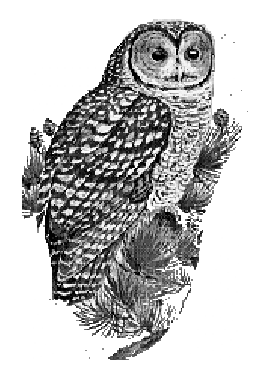On June 23, 1990, the U.S. Fish and Wildlife Service lists the northern spotted owl (Strix occidentalis caurina) as a threatened species under the Endangered Species Act. This results in old-growth timber being blocked from logging, regardless of its ownership. Prior issues involving the spotted owl centered on habitat in National Forests.
Under the Endangered Species Act (ESA) of 1973, listed species are protected from "taking," which includes loss of habitat. The owl lives in old-growth forest -- forests that have not been logged or burned in 200 years. The Fish and Wildlife Service of the Department of the Interior is responsible for evaluating evidence and making a determination solely on environmental reasons. In 1987, the Fish and Wildlife Service declined to list the bird and was sued by environmental groups. During the litigation, it was disclosed that the agency had used economic and political considerations in its decision, so it was ordered to reconsider. In 1989, the agency announced a proposed listing as threatened. The rule became effective on June 23, 1990.
Because of the dramatic impact that the listing had on the logging industry -- all old-growth logging would virtually cease -- implementation of the rule was delayed until plans could be developed. Restrictions on logging created much debate and much acrimony, particularly in communities that lost jobs in the lumber industry. The U.S. Forest Service was already restricting logging in old-growth forests to protect the owl as part of the National Forest Management Act. In 1991, U.S. District Court Judge William Dwyer (1929-2002) rejected a plan by the U.S. Forest Service to protect the owl in National Forests under a different law, the National Forest Management Act. He ordered a stop to timber sales from National Forests until he approved a better Forest Service plan in December 1994. So, two agencies were taking steps under two laws to protect the owl.
On June 29, 1995, the U.S. Supreme Court upheld the authority of the Fish and Wildlife Service to regulate logging on private land under the Endangered Species Act.

